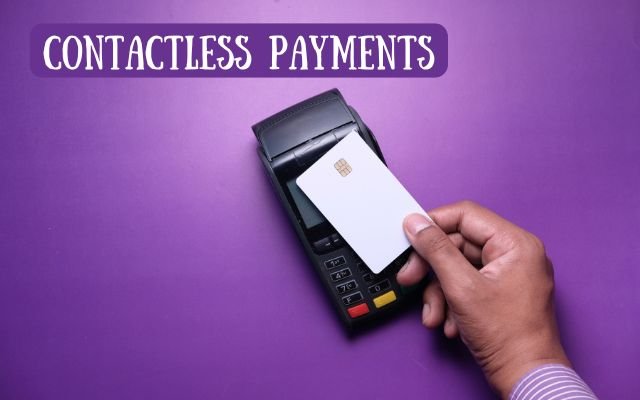Contactless Payments: How Often Do You Tap and Go?
Curious about contactless payments? Learn how often people use this convenient technology and explore the benefits of going cashless.

Discover the convenience and security of contactless payments, from tap-to-pay cards to mobile wallets, transforming how we spend money.
Our methods for handling, growing and spending funds have been continuously evolving for a number of years. In the past, money usually had a solid value since it was backed by precious metals like gold or silver. Subsequently, governments imposed fiat currencies which have no relation to any tangible assets. This change has completely altered our understanding of money. After then, credit cards became more and more popular as convenient way to make purchases with simply a card swipe or chip insert.
We are now in a new era where paying with a card doesn’t even require physical contact. In fact, we may not even need to carry a card in our wallet. The rise of Contactless Payment has changed everything, making contactless payments increasingly popular and quickly adopted all around the world.
Table of Contents
Contactless Payments
Contactless payment might sound broad, but it usually refers to specific methods of paying in person. It can be used with a digital wallet-enabled smartphone app or a contactless card. In order to interact with a payment reader, these payments rely on technologies like near-field communication (NFC) & radio-frequency identification (RFID). To ensure that payments are made knowingly they only function when your phone or card are two to four inches away from the reader.
For consumers, using contactless payment is very simple. If the store has a contactless reader, all you need to do is hold your phone or card near it, and the transaction will automatically be completed.
Safety and Comfort
Depending on your bank or the country you’re in, there might be a limit on how much you can spend using contactless payments. This limit could be a total cap, or a soft limit where transactions above a certain amount require a PIN or signature. These rules can vary, so it’s a good idea to know your limit and ask your bank if you can set your own.
Though spending limits might reduce the convenience of contactless payments, they offer extra security. If someone steals your card or phone, they won’t be able to spend much before hitting the limit, which helps protect your account from unauthorized use.
Additionally, contactless transactions are protected by the same security measures that safeguard traditional card payments. Although the information sent during payment may be captured, it is encrypted and hence unlikely to be of interest to hackers.
If you wish to switch to contactless payments, you have a lot of options and they are generally extremely safe.
Tap-to-Pay Cards
Contactless debit and credit cards, commonly referred to as “Tap to Pay” cards, are the most widely used kind of contactless payments. Although they feature a tiny antenna inside that enables wireless communication with payment readers they nonetheless have the appearance of standard cards. If a retailer doesn’t have a contactless reader, you can still use these cards in conventional methods because they also feature a magnetic strip & chip.
“Tap to Pay” cards have become very popular in just a few years. In Europe, contactless payments are now standard, with most new cards including this feature. In U.S., adoption has been slower but it is growing.
Contactless payment capabilities have been available for all Chase Visa cards since 2019. American Express and Capital One have also long provided contactless payment options. Contactless cards are also offered by other US institutions including Wells Fargo, Citi, Bank of America, and Discover.
Contactless payment infrastructure has grown; according to a 2018 research, 95% of newly installed point-of-sale terminals allow “Tap to Pay.”
Mobile Payment Apps
Another popular option for contactless payments is mobile apps and wallets. These are applications on smartphones that allow you to use your phone instead of a credit or debit card. To use them, just turn on your phone’s contactless payment feature, download the apps you want, or link your existing credit cards to them. Then, you can pay by bringing your phone close to a card reader, just like with a Tap to Pay card.
Two of the most popular mobile wallets today are Google Pay and Apple Pay, which are designed for Android and iOS devices, respectively. These services connect to your credit or debit card from your bank, acting as a secure middleman to complete transactions wirelessly.
While using mobile apps and wallets might seem like an extra step, they add comfort and security by keeping your card information separate from daily transactions. They also enhance security by requiring authorization for each transaction. You might need to provide a fingerprint, facial recognition, or a code to complete a payment.
A Changing Payment Industry
Contactless payment is a technology that is constantly changing, and we are still finding new ways to use it. For instance, biometric payment cards have been introduced, which are credit and debit cards with fingerprint scanners, combining the convenience of a card with the security of mobile apps.
Services like Revolut and Cash App are now providing options similar to Google Pay and Apple Pay, but they also make it easier to transfer money between different currencies and people. As financial management continues to move online, contactless payment technology will become more popular and widely available.
- What Makes a Great Messaging App? Key Features to Look For
- Can’t Hear Dialogue? Here is How to Fix Your Smart TV Sound
- How to Download a Complete Webpage for Offline Reading
Conclusion
Tap-to-pay cards and mobile wallets allow you to make payments without touching anything. They have become more popular, especially during the Covid-19 pandemic. While contactless cards have some security features, mobile wallets often provide better protection by needing things like fingerprints.
Most new payment terminals accept contactless payments, and many stores encourage using these methods.



